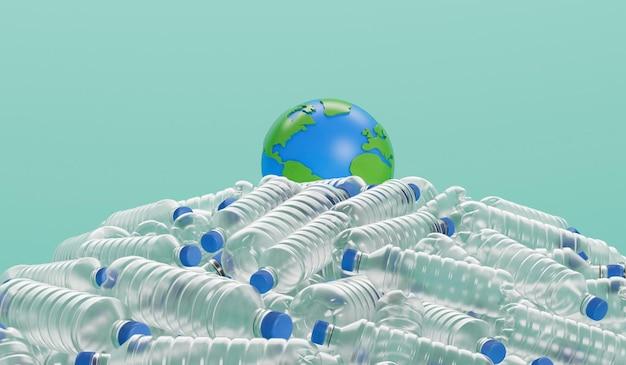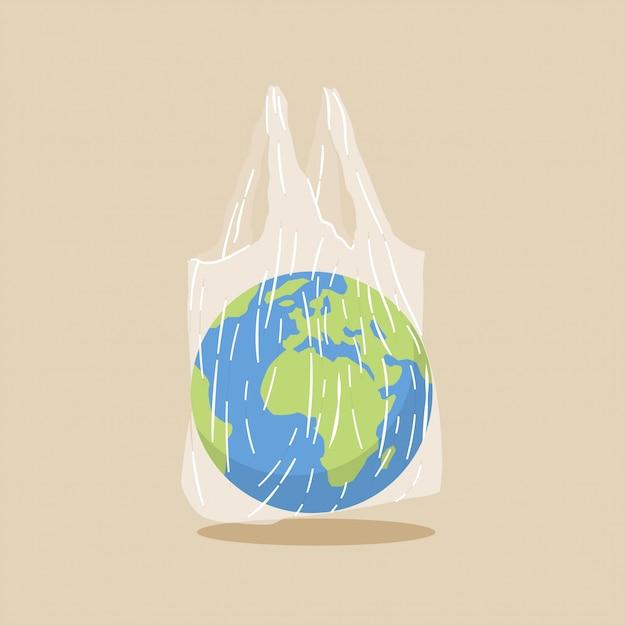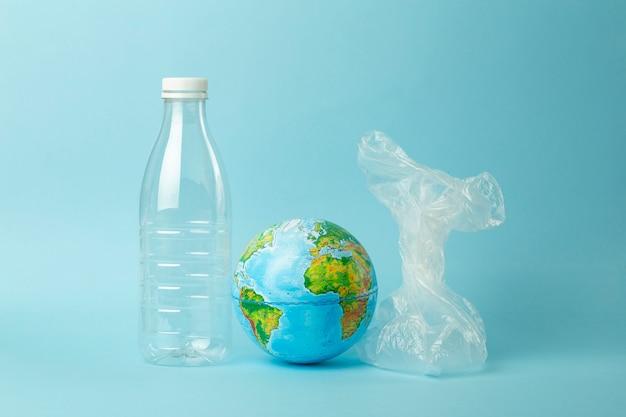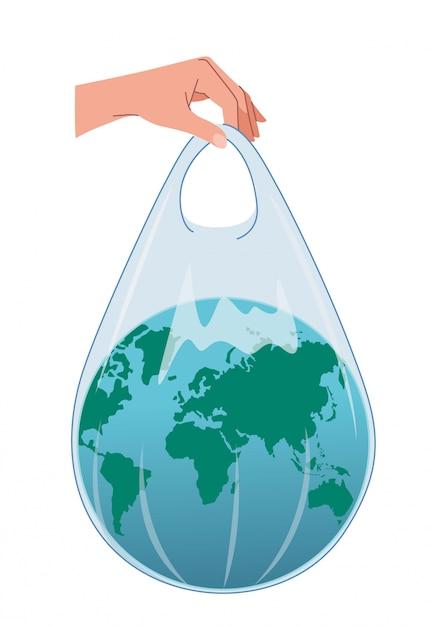Have you ever wondered what happens to all the plastic waste we generate? It turns out that virgin plastic production has reached alarming levels, leaving behind plastic waste that ends up in our oceans and landfills. But there’s a solution emerging that can help solve this problem—social plastic.
In this blog post, we’ll explore what social plastic is, how it works, and what impact it’s having on our environment. We’ll also look at plastic banks, the organization responsible for collecting and cleaning up plastic waste, and how it’s helping turn waste into a currency for change. So, if you’re curious about what social plastic is and how it’s changing the game, keep reading.
What is Social Plastic
If you’ve heard the term “social plastic” before, you might be wondering what it means exactly. Well, let’s break it down.
Plastic with a Purpose
When you think of plastic, you probably think of single-use water bottles or plastic bags. But what if plastic could have a greater purpose? That’s where social plastic comes in.
A New Spin on Recycling
Social plastic is a type of recycled plastic that has been collected from areas with high poverty rates around the world. This plastic is then repurposed into new products, like phone cases and sunglasses. The collection and repurposing process provides jobs to people in these communities and helps clean up the environment.
The Power of Buying
One of the essential aspects of social plastic is that it encourages consumers to support eco-friendly brands. By purchasing products made from social plastic, you help support these global initiatives and ensure that plastic gets a second chance to do some good.
Changing the Plastic Narrative
Social plastic is much more than just a buzzword. It’s an opportunity to change the conversation about plastic in our society. By redefining what’s possible with plastic, we can create a more sustainable future.
So, the next time you shop for a new phone case or sunglasses, consider choosing a product made from social plastic. Not only will you be supporting a good cause, but you’ll also have a unique and stylish accessory.
Virgin Plastic: The OG of Plastic
Let’s face it, we’ve all grown up using products made of plastic. But have you ever stopped and wondered where it all comes from? Well, let me introduce you to the OG of plastic – virgin plastic.
What is Virgin Plastic
Virgin plastic is the type of plastic that’s made from fresh, raw materials like crude oil or natural gas. It’s the most commonly used plastic in the world and can be found in pretty much everything, from packaging materials to electronic devices.
Is Virgin Plastic Bad
Now, you may be wondering what harm could using virgin plastic do? Well, the process of producing virgin plastic requires a lot of energy and resources, which can contribute to rampant air pollution, water pollution, and climate change.
The Problem with Virgin Plastic
The production of virgin plastic is a major contributor to the plastic pollution crisis, as the plastic products made from virgin plastic are often used once and then discarded. This results in plastic waste that takes hundreds of years to degrade, causing harm to the environment and wildlife.
Alternatives to Virgin Plastic
Thankfully, there are alternatives to using virgin plastic, such as recycled plastic or bioplastics, which are made from organic materials like cornstarch. By choosing products made from recycled or bioplastics, we can reduce our reliance on virgin plastic and help protect the planet.
In conclusion, while virgin plastic has been the OG of plastic for decades, we must understand its impact and consider alternative options. By making small changes in our everyday lives, such as using reusable bags or straws made from recycled materials, we can make a significant impact in reducing the plastic pollution crisis.
Plastic Banks: Turning Waste into Currency
Have you ever heard of a plastic bank? No, it’s not an ATM that dispenses single-use straws or water bottles. It’s actually a brilliant solution to one of the world’s most pressing problems- plastic pollution.
A Bank for Plastic Waste
Plastic banks are centers that encourage communities to reduce plastic waste by incentivizing them to collect plastic litter and bring it to their local plastic bank. Community members earn rewards or cash based on the number of plastic items they collect. The plastic gathered is then sorted, cleaned, and sold for recycling.
A Solution to Plastic Pollution
Plastic waste has been crippling our ecosystems for decades, but plastic banks offer a glimmer of hope. Like a bank that rewards savers with interest, plastic banks reward communities for reducing plastic waste. This approach creates a higher demand for recycled plastics, thereby reducing the amount of new plastic produced.
Environmental and Social Benefits
Besides the environmental benefits that plastic banks offer, they also have tremendous social benefits. By rewarding local communities financially, plastic banks help reduce poverty and create jobs. Moreover, they promote education and awareness about the negative effects of plastic waste, creating a ripple effect on consumer behavior and reducing our overall dependence on single-use plastics.
Across the world, plastic banks are growing in popularity and proving to be a game-changer in the fight against plastic pollution. They offer a cost-effective solution that incentivizes local communities to take charge of their waste and create a cleaner, healthier future for us all. So next time you see plastic litter on the ground, remember that it could be turned into a valuable currency with the help of plastic banks.
What is Social Plastic
Social plastic is a new term used to describe plastic waste repurposed for social good. It involves collecting and processing plastic waste from the environment and turning it into valuable products used to support social initiatives like education and healthcare. It’s essentially a way to tackle two critical global challenges at once: poverty and plastic pollution.
How is Social Plastic Different from Regular Plastic
Unlike regular plastic, which is often discarded carelessly, social plastic is recycled, repurposed, and used to solve pressing social issues. Its value lies in the fact that it meets a critical social need while reducing the amount of plastic waste that ends up in landfills or oceans. Social plastic also comes with a unique supply chain that traces the source and origin of the plastic waste, providing local communities with a source of income while simultaneously removing plastic waste from the environment.
What Products Are Made from Social Plastic
Social plastic can be repurposed into a wide range of products, including furniture, clothing, and even building materials. These products are often made using innovative, sustainable production techniques that utilize low-energy machinery and reduce emissions. The most exciting aspect of social plastic is that it’s infinitely versatile and can be used to create anything from school supplies to medical equipment, making it an essential resource for social causes worldwide.
How Can You Support Social Plastic
There are numerous ways to support social plastic initiatives, including purchasing products made from social plastic, spreading awareness of the issue, and donating time or money to organizations that work to repurpose plastic waste. Every little bit helps, and you can make a real impact by taking small steps towards creating a more sustainable and equitable world. So why not take that first step today and be a part of the solution to plastic pollution?
How Plastic Bank Works
Plastic Bank is a revolutionary organization that incentivizes people to collect plastic waste by exchanging it for money or essential items like food, water, and other basic necessities. But, what’s so special about plastic waste? Well, plastic waste collected by Plastic Bank is what we call Social Plastic – plastic waste that is sorted, recycled, and repurposed to create new products.
Collection Process
Plastic Bank has established collection centers in developing countries that offer incentives to residents for turning in plastic waste. These centers act as a central hub where residents can bring their plastic waste and exchange it for cash or other essentials.
Sorting and Processing
Once the plastic waste is collected, Plastic Bank sorts it based on the type of plastic, color, and quality. The waste is then cleaned and shredded to enhance the recycling process. The shredded plastic is then sold to manufacturers to produce new products like backpacks, phone cases, and other useful items.
Benefits of Plastic Bank
The benefits of Plastic Bank are manifold – it not only helps in reducing plastic waste but also addresses poverty in developing nations. The exchange of Social Plastic not only helps to empower individuals and give them a stable income but also helps to create new products from recycling the plastic waste.
Plastic Bank is an eco-friendly organization that takes an innovative approach to reducing plastic waste and promoting sustainability through incentivizing people to collect and recycle plastic waste. By offering an exchange for waste, the organization not only reduces plastic waste but also provides essential help to those in need while giving individuals a stable source of income. Next time you think about throwing away plastic waste, consider the power of Social Plastic and how you could make a big difference by supporting Plastic Bank.
Where Does Plastic Come From
Plastic is a ubiquitous material that we encounter in our daily lives, from water bottles to computer keyboards. But have you ever stopped to wonder where all this plastic comes from?
The Origin of Plastic
Before we dive into the specifics of where plastic comes from, let’s take a trip down memory lane to understand how plastic was invented. In 1869, John Wesley Hyatt created the first plastic made from cellulose nitrate. This early form of plastic was highly flammable, leading to several accidents. Fast forward a few years, and we saw the invention of a material now commonly known as Bakelite. Bakelite was a much safer plastic, and it helped pave the way for the widespread use of plastics.
Crude Oil to the Rescue
Today, most plastics are made from crude oil. When crude oil is refined, it’s broken down into various components, one of which is ethylene. Ethylene is then used as a building block to create a variety of different plastics. So, every time you use a plastic product, just remember that it’s made from the same stuff that fuels your car!
A Brief Word on Recycling
Given that plastic is made from crude oil, it’s no surprise that it isn’t an environmentally friendly material. However, innovations in recent years have made recycling plastic a much more viable option. By recycling plastic, we can help reduce the amount of crude oil that we consume and extend the life of existing plastic materials.
In conclusion, plastic comes from crude oil, and recycling is our best option for reducing its negative environmental impact. So, next time you toss a plastic bottle in the recycling bin, pat yourself on the back for doing your part to help the environment!
How Many Plastic Bottles Were Used in the Whale Sculpture
Have you ever wondered how many plastic bottles it took to create the impressive whale sculpture made entirely of recycled plastic? Well, let me just say, it’s a whale of a number!
A Plastic Whale of a Sculpture
The whale sculpture is an impressive work of art, measuring nearly 38 feet in length. The creators of the sculpture, a group called Washed Ashore, used over 10,000 plastic bottles to construct it.
That’s a LOT of Bottles!
Yes, you read that right – 10,000 bottles! To put that into perspective, imagine a room full of people all holding one plastic bottle. That’s how many bottles were used to create just one sculpture!
Of course, It Didn’t Happen Overnight
The process of collecting and processing that many plastic bottles would have been a massive undertaking. It’s essential to note that this particular sculpture wasn’t created in a day or even a week. Collecting that many bottles took time and effort, with the Washed Ashore group sourcing plastic from beaches, recycling centers, and even individuals. Once collected, the bottles were then cleaned, sorted, and processed into the unique shape of the whale.
The Significance of the Sculpture
The sculpture represents more than just an impressive work of art. It highlights the growing problem of plastic waste in our oceans, and the need to take action to reduce this problem.
In conclusion, the number of plastic bottles used in the whale sculpture is significant, and the sculpture itself is a reminder of the need to recycle and take care of our planet.



